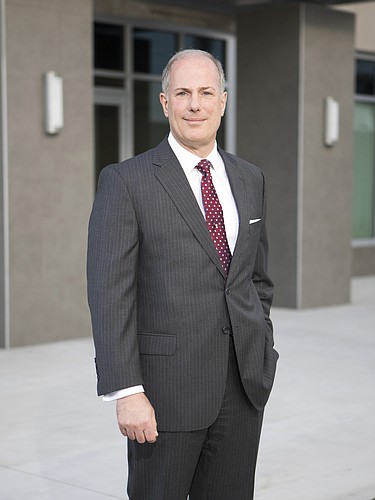It was more than a decade ago when Tony Leo gave up a plum executive position at a $4 billion, 81-branch Harrisburg, Pa.-based bank and moved to Sarasota. His goal: grow a community bank focused on customers of all sizes and ages — not just cater to developers and real estate speculators.
That bank, ConsumerFirst, never made it. It was a victim, mostly, of bad timing, coming at the onset of the recession. While ConsumerFirst didn’t last, Leo, now CEO of Seminole-based First Home Bank, remains convinced the principles of that bank are ripe for the region. Those ideals include special clubs for seniors (TrendSetters), a kid’s banking club and NuStart, for customers with credit challenges.
Going on his fourth year at the helm of First Home, Leo’s strategy is starting to come to fruition.
Annual revenue at First Home, with four branches, all in Pinellas County, rose 86.2% in 2017 over 2016, from $20.6 million to $38.36 million. The bank posted a profit of $5.47 million in 2017, up 29% from $4.23 million in 2016. More proof: The bank’s return on assets for 2017 was 2.46%, while return on equity was 22.46% — stellar ratios, both for the bank and among its peers. The average return on equity for all community banks nationwide, for example, in the 2017 fourth quarter was 8.37%, and never went over 10% in any quarter in 2017, according to data from the Federal Reserve Bank of St. Louis. The average return on assets for banks nationwide, meanwhile, has hovered around 1% each quarter for the last five years — with a high point of 1.26% in the 2018 first quarter.First Home had $295.4 million in assets through March 31, according to Federal Deposit Insurance Corp. data.
The assets and profits surge stems from more than Leo’s belief in a true community bank that serves a variety of demographics. It also comes from the bank’s decision to expand heavily in two areas. One, SBA loans, is standard fare for many community banks.
'Other banks in the region have given up on residential, but where others see obstacles, we see opportunities.' Tony Leo, First Home Bank
The other area First Home targeted, residential mortgages, is a counterintuitive move community banks traditionally shun because of complicated regulations and its high-volume, low-margin model. “Other banks in the region have given up on residential,” Leo says. “But where others see obstacles, we see opportunities.”
First Home launched a residential mortgage unit in late 2016, and has grown it rapidly ever since. The bank has some 330 employees, with the bulk of those in residential mortgages, both in Florida and in states in the Northeast and Midwest. That includes loan originators it recruited from other companies.
The common theme in First Home’s residential mortgage unit, says Leo, is a robust system with new technology that provides a streamlined process for mortgage officers to build their book of business. “We built a significant infrastructure,” for the residential mortgage division, says Leo, who declines to say how much the bank invested in it. The infrastructure includes a book everyone in First Home residential mortgages receives that goes over the processes. Says Leo: “The systems and procedures book isn’t something you’re going to see in many other organizations, in terms of how detailed it is.”
While Leo aims to grow First Home’s mortgage unit, he realizes there are some challenges and risks in residential loans, from the stability of the housing market to the low returns. For example, a mortgage loan at 4% doesn’t come close to an SBA loan, which could be 12%. (On the flip side, residential loans are less capital-intensive than most other loans and don’t corrode a bank’s balance sheet.)
On SBA loans, meanwhile, First Home has made significant payroll additions since it launched that program 2015. It now has around 45 employees who handle SBA loans, and the bank is a top 10 SBA 7(a) producer nationally. “I believe our SBA division is second to none,” Leo says. “It’s a highly profitable, well-run division.”
Taken in total, SBA and mortgages are pieces in First Home’s overall strategy, says Leo. The strategy includes expansion to Hillsborough and the Sarasota-Bradenton market, eventually. “We want to be the premier community bank in the region over the next five years,” he says. “It takes a long time to build a bank that’s community-oriented, but we are in this for the long term.”






